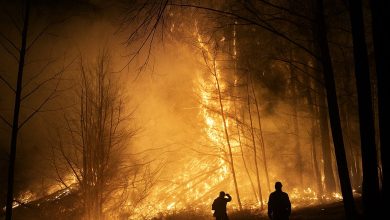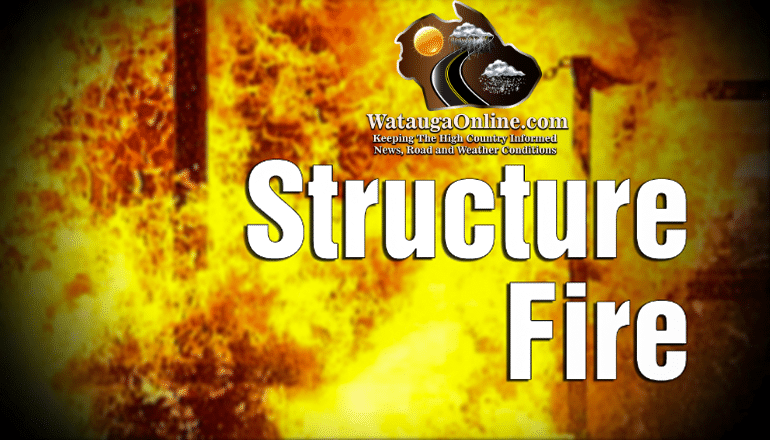
Last Updated on February 18, 2025 12:26 pm
Broadcast provided by PBS North Carolina
Today, Governor Stein declared a state of emergency as emergency officials prepare for winter weather to impact the majority of the state. In a briefing this morning, Governor Stein, Director of Emergency Management Will Ray, and Secretary of Transportation Secretary Joey Hopkins provided an update on the winter weather that will impact much of the state starting Wednesday and into Thursday. The Governor advised that all North Carolinians take precautions by listening to local officials and plan accordingly for low temperatures, ice, and snow.
“This morning, I declared a state of emergency across North Carolina, and we are activating a cross-agency storm response,” said Governor Josh Stein. “Most of North Carolina will be impacted by this storm, and our greatest concerns are potential power outages and road safety. We urge all travelers to stay off the road once the storm hits on Wednesday, to keep their devices charged, and to monitor local weather.”
“The State Emergency Response Team has been activated and is working with the Department of Transportation, North Carolina National Guard, State Highway Patrol, Department of Health and Human Services, and local emergency management to provide resources quickly throughout the state,” said Director of Emergency Management Will Ray. “We ask that all North Carolinians continue to monitor the weather tomorrow and stay off the roads when possible.”
A winter storm will impact much of North Carolina Wednesday into Thursday. The forecast for northern central and eastern North Carolina includes snowfall accumulations of 2 to 6 inches, with localized totals reaching up to 9 inches across the far northeast. The northern mountains and higher elevations in western North Carolina are expected to receive 2 to 4 inches of snow. Elsewhere, lighter snowfall accumulations of 1 to 3 inches are anticipated, with the exception of far southeastern North Carolina, where light freezing rain or rain is expected.
Significant ice accumulation is possible in parts of central and eastern North Carolina. Accumulations of a quarter inch or more may cause tree limbs to break and lead to power outages. It is crucial for all North Carolinians to stay informed about the weather, as the forecast will be updated and refined as Wednesday approaches.
The State Emergency Response Team is activated, and the State Emergency Operations Center and Regional Coordination Centers remain in close communication with local emergency management officials to ensure that all resources are available and ready to quickly respond to aid our North Carolina communities.
The North Carolina National Guard (NCNG) has activated more than 180 guardsmen to assist and support local communities across the state.
More than 1,500 employees with the N.C. Department of Transportation have been pre-treating roads across the state. As of Tuesday morning, the agency had spread 1.8 million gallons of brine to pretreat hundreds of miles of interstates, highways, and secondary roads statewide. Nearly 600 trucks with plows and spreaders and 240 motor graders are ready to remove snow and ice, and more than 130,000 tons of salt are ready to treat roads after the storm hits.
Once the storm hits, NCDOT crews are prepared to work around-the-clock in shifts to plow and treat snow and ice until all state-maintained roads are cleared. The agency will prioritize clearing interstates first, followed by U.S. and N.C. routes and then secondary roads.
Visit ReadyNC.gov for power outage information and for information on how you and your family can prepare for winter weather. For real-time travel information, visit DriveNC.gov or follow NCDOT on social media.
To prepare for winter weather, North Carolina Emergency Management officials recommend these tips:
- Pay close attention to your local forecast and be prepared for what’s expected in your area. Use a National Oceanic and Atmospheric Administration weather radio or a weather alert app on your phone to receive emergency weather alerts.
- Stock up on water and non-perishable food.
- Keep cell phones, mobile devices, and spare batteries charged.
- Stay home and off the roads if you can.
- Store an emergency kit in your vehicle in case you must travel. Include scraper, jumper cables, tow chain, sand/salt, blankets, flashlight, first-aid kit, and road map.
- Dress warmly if you go outside. Wear multiple layers of thin clothing instead of a single layer of thick clothing.
- Gather emergency supplies for your pet including leash and feeding supplies, enough food for several days, and a pet travel carrier.
- Do not leave pets outside for long periods of time during freezing weather.
- Check in on your friends and neighbors, especially the elderly, during winter weather.
- If your power goes out:
- Only operate generators outside and away from open windows or doors to prevent carbon monoxide poisoning.
- Never burn charcoal indoors or use a gas grill indoors.
- Properly vent kerosene heaters.
- Use battery-powered sources for light, instead of candles, to reduce the risk of fire.
- If you are utilizing a portable heater, make sure that it is properly ventilated, has at least 3 feet of space on all sides, and never leave children unattended near a heater.



















